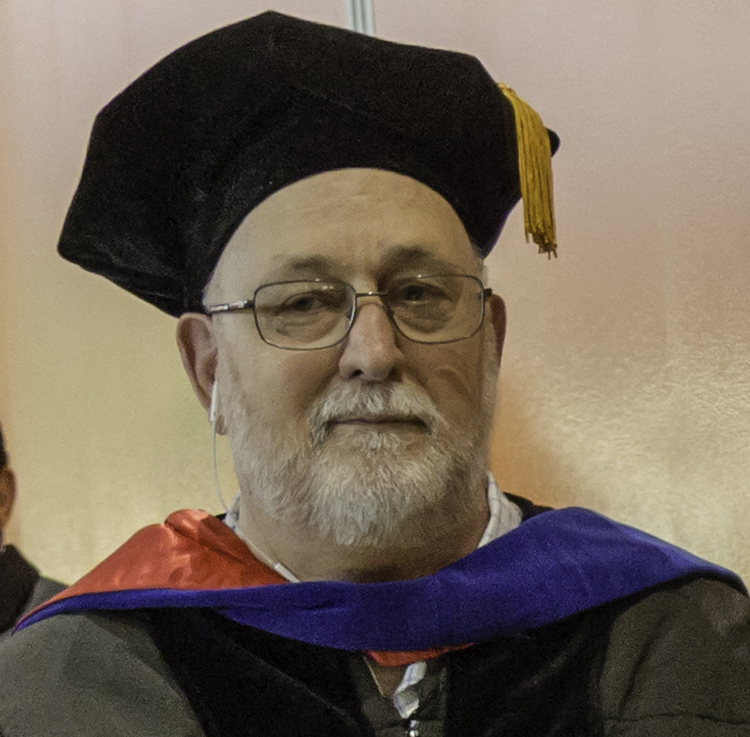
Professor Emeritus Carlos Lynn Virgil Aiken passed away peacefully on June 18, 2021 at Medical City Plano. Carlos was born on June 6, 1941 in Webster, South Dakota, to Randolfo Cossio Aiken and Elvira Esturo. He served in the National Guard in 1957. Carlos received his bachelor’s of science from the University of Washington in 1965 and married Kathy Paulsen, the love of his life, in 1966. Their marriage lasted almost 55 years.
They stayed in Seattle, and he received his master’s in 1970 from the University of Washington. Then they moved to Arizona where he received his PhD from the University of Arizona in 1976. Carlos came to Texas to join the Texas Christian University faculty, where he served for two years before Anton Hales recruited him to join the UT Dallas Department of Geosciences. He joined as an assistant professor in 1978, gained tenure easily and rose through the ranks to become professor.
He started out specializing in what geoscientists then-called “potential fields,” measuring Earth’s gravity and magnetic fields in different places around the US and Mexico, and using these gravity and magnetic maps to identify important features in the Earth’s crust for oil and gas exploration. He was one of the founding faculty of the Summer of Applied Geophysical Experience (SAGE) field course in 1983. In the 1990s he became increasingly interested in using the new satellite global positioning systems (GPS) and this led quickly to his interest in Geographic Information Systems (GIS). Not long after, he started digital outcrop mapping or “cyber-geology” and founded the UTD Cybermapping Lab (where you can learn more about cybermapping and download scans). Carlos originated the concept of photorealistic outcrop models from LiDAR and photos. He and Xueming Xu have patent # 6,590,640 dated July 8, 2003, “Method and apparatus for mapping three-dimensional features.” An October 2018 workshop in France to discuss the establishment of a worldwide archive for such models acknowledged that Carlos played the leading role in establishing this 21st century technology. Carlos continued his teaching and research in this field until he retired in 2018.
Carlos Aiken’s M.S. and PhD Students
M.S. Thesis (18):
PhD Dissertations (13):
Help us leave the planet a better place for future generations. Your support for the School of Natural Sciences and Mathematics funds scientific discoveries with real-world applications, student and faculty recruitment, and academic scholarships.